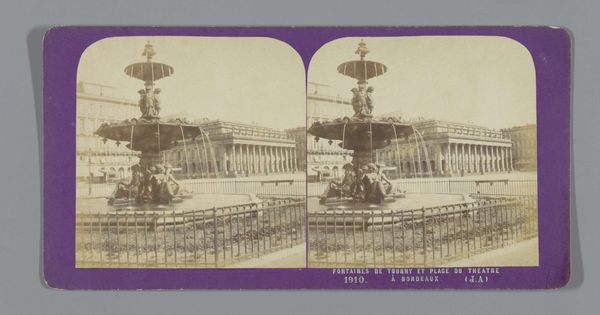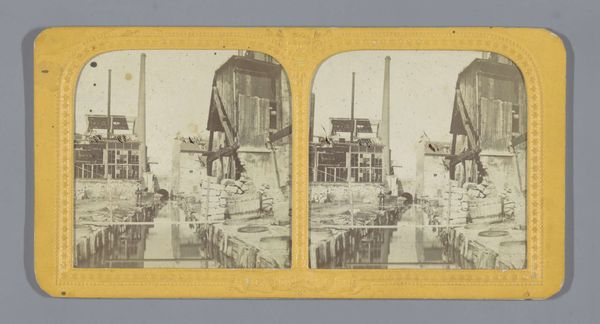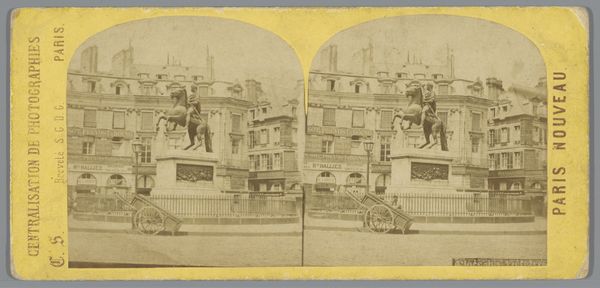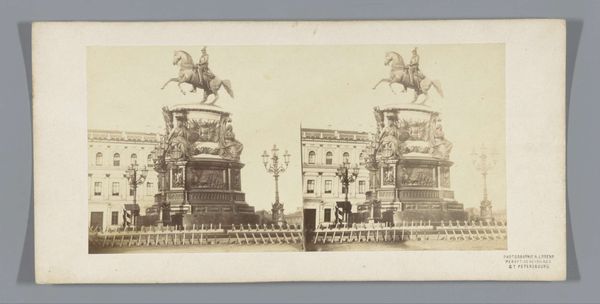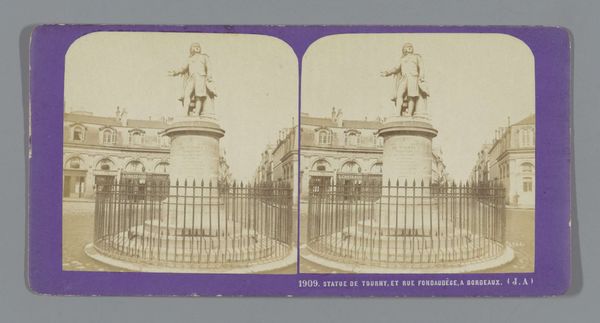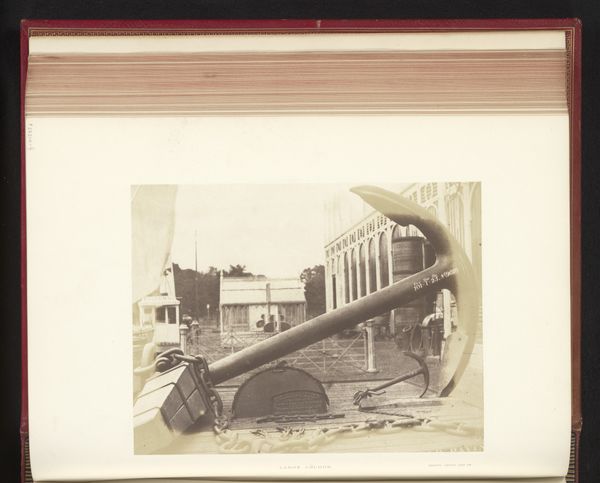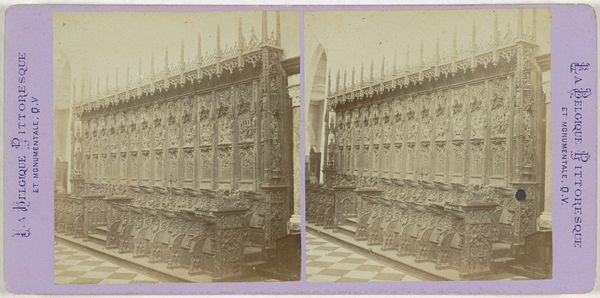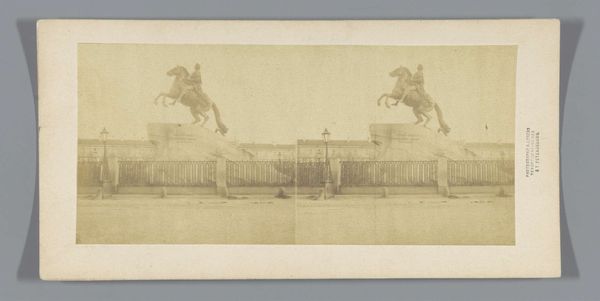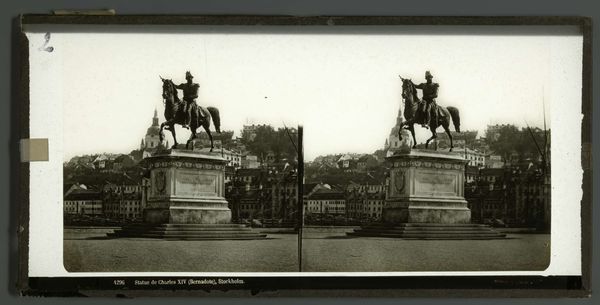
Fontana dei Dioscuri op het Piazza del Quirinale te Rome c. 1850 - 1880
0:00
0:00
Dimensions: height 85 mm, width 170 mm
Copyright: Rijks Museum: Open Domain
Curator: This is an albumen print of the Fontana dei Dioscuri on the Piazza del Quirinale in Rome, dating from between 1850 and 1880, created by Giuliano Ansiglioni Ottico. Editor: Immediately, I'm struck by how still and silent it feels, despite being a busy public space. The muted tones contribute to a dreamlike timelessness, like a forgotten Roman vista. Curator: It's a compelling depiction of civic pride, aligning perfectly with the era's fascination with realism, while also reinforcing the public perception of Rome as a cultural beacon through neoclassicism and its ties to Greek and Roman art. Note how the perspective guides the viewer into the heart of the piazza, emphasizing the monumentality of the Dioscuri. Editor: Absolutely, the statues themselves become powerful symbols of idealized strength and heroic virtue. The figures with their steeds seem to represent something beyond mere physical power, more like spiritual guides or guardians, placed purposefully next to that towering obelisk which reaches up toward enlightenment. The Dioscuri as connectors of the earthly and the divine. Curator: That elevation certainly reflects the Church’s political maneuvering, to Christianize a prior, pagan, symbolic space, literally building on what came before. In that vein, photography like this helped disseminate classical ideals to a broader public, reinforcing Rome's role as the epicentre of cultural authority across Europe. Editor: I find myself thinking about how people in the 19th century viewed this image. Were they more focused on the accuracy of the representation, or did they appreciate the deeper symbolic meanings rooted in classical mythology, like you said, those persistent links of culture throughout the times? This work shows how art carries more cultural and psychological weight than you expect. Curator: It served a dual purpose: both to educate and to celebrate a specific social and cultural identity. That makes it more potent and gives photography an active social role beyond simply documentation. Editor: Reflecting on our discussion, this image reveals that symbols don’t exist in a vacuum, but are embedded in and shaped by historical moments. They accumulate layers of meaning. Curator: And that act of accumulation reveals how intertwined art, politics, and cultural identity truly are, which continues to resonate into our own time.
Comments
No comments
Be the first to comment and join the conversation on the ultimate creative platform.
